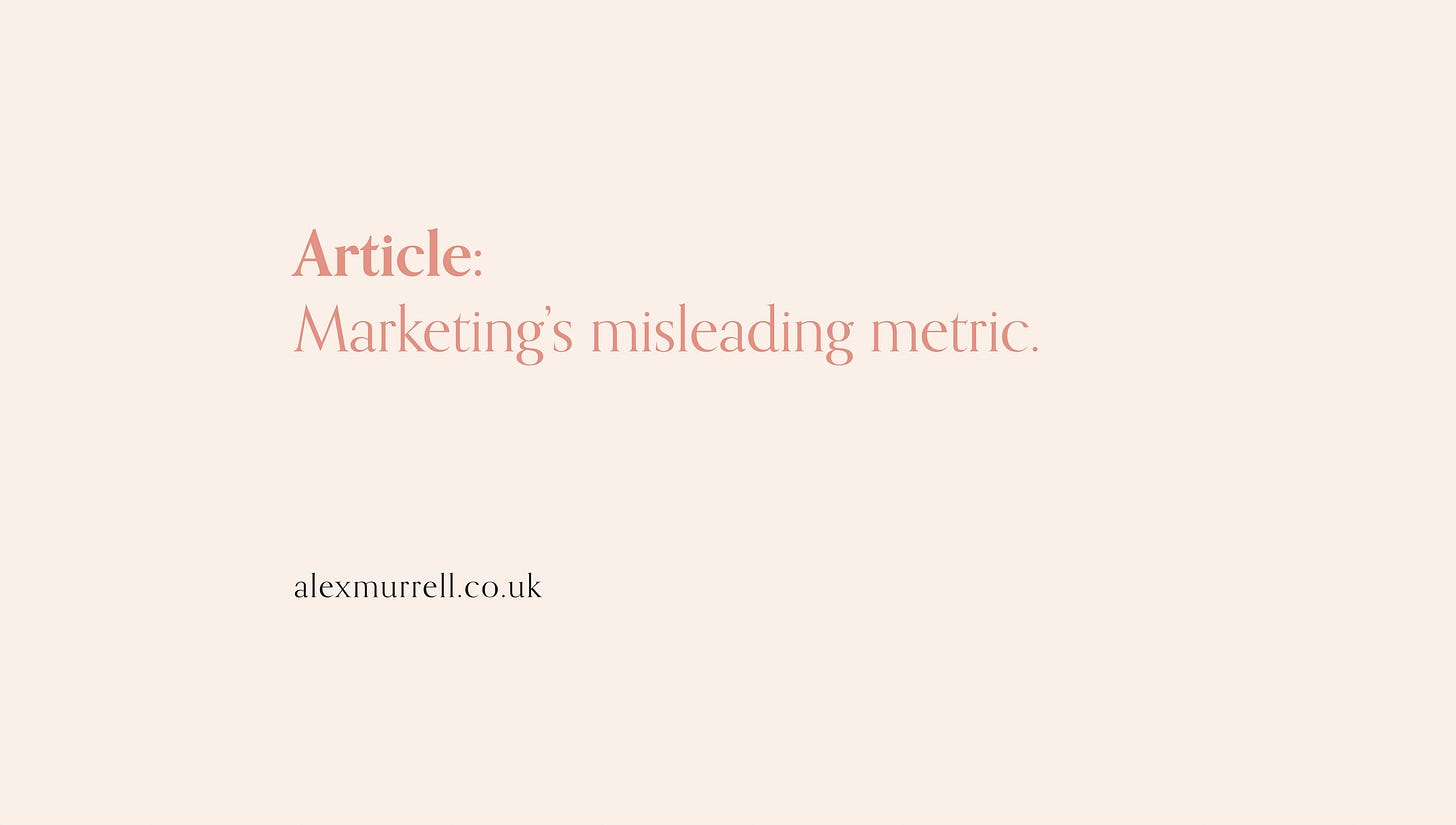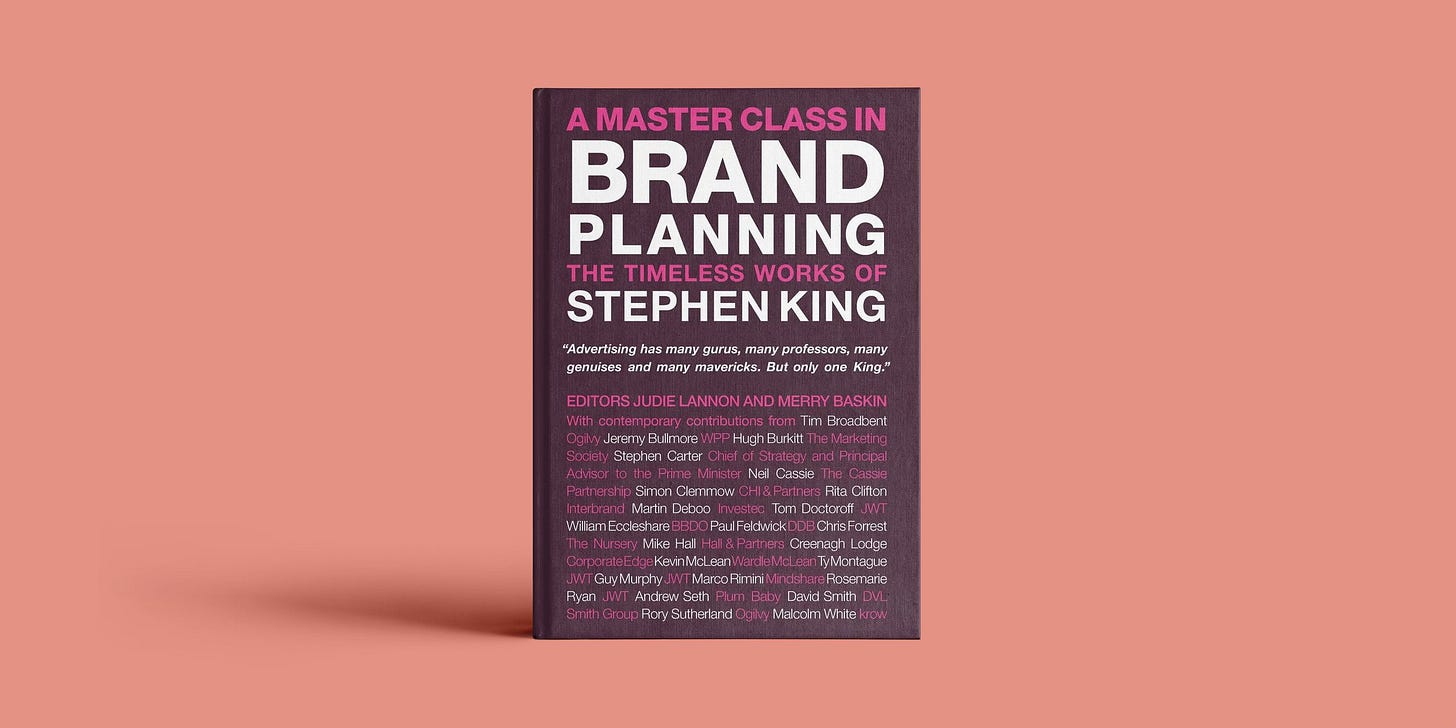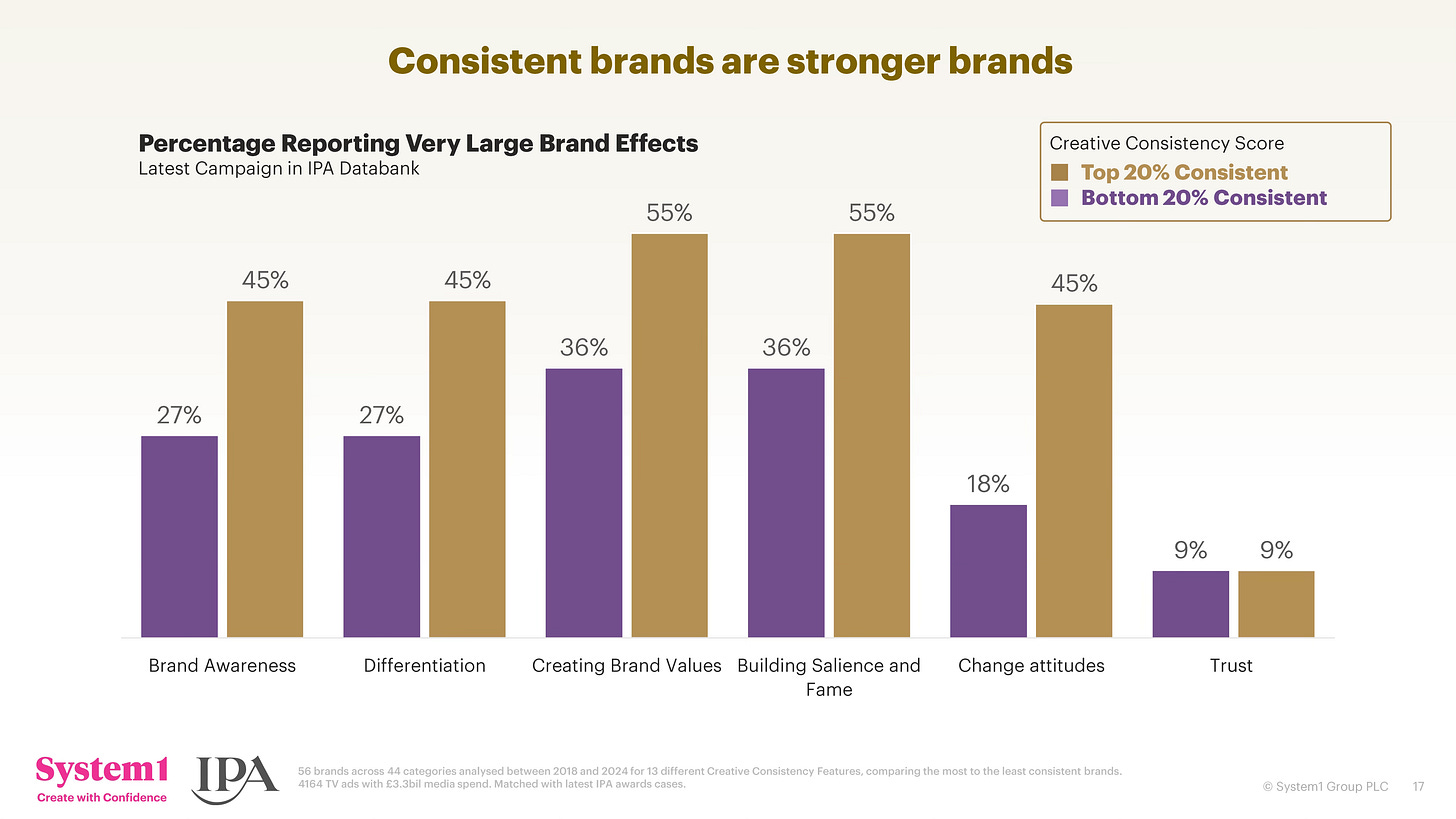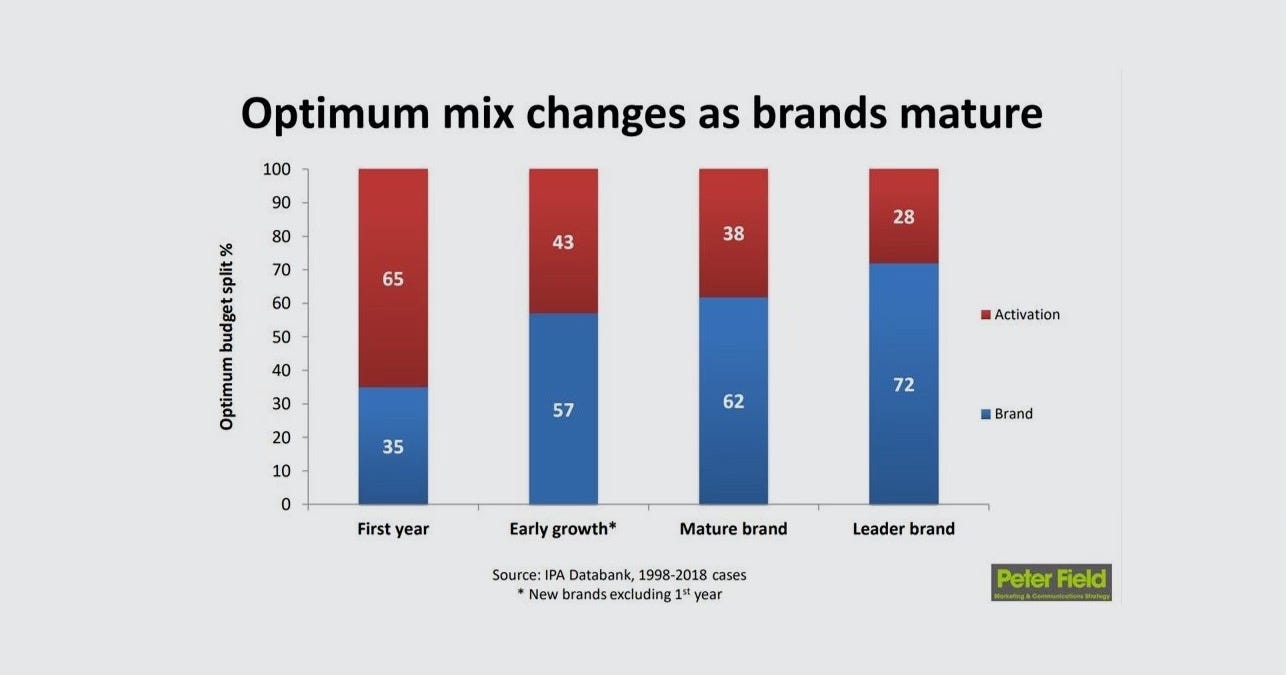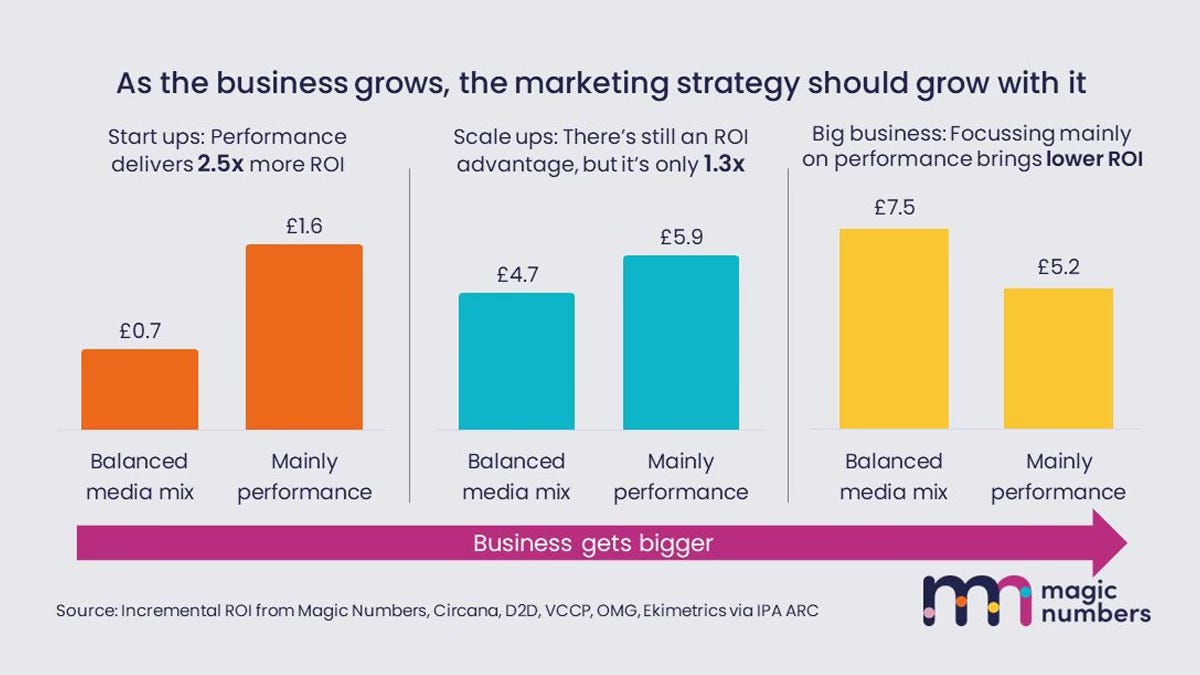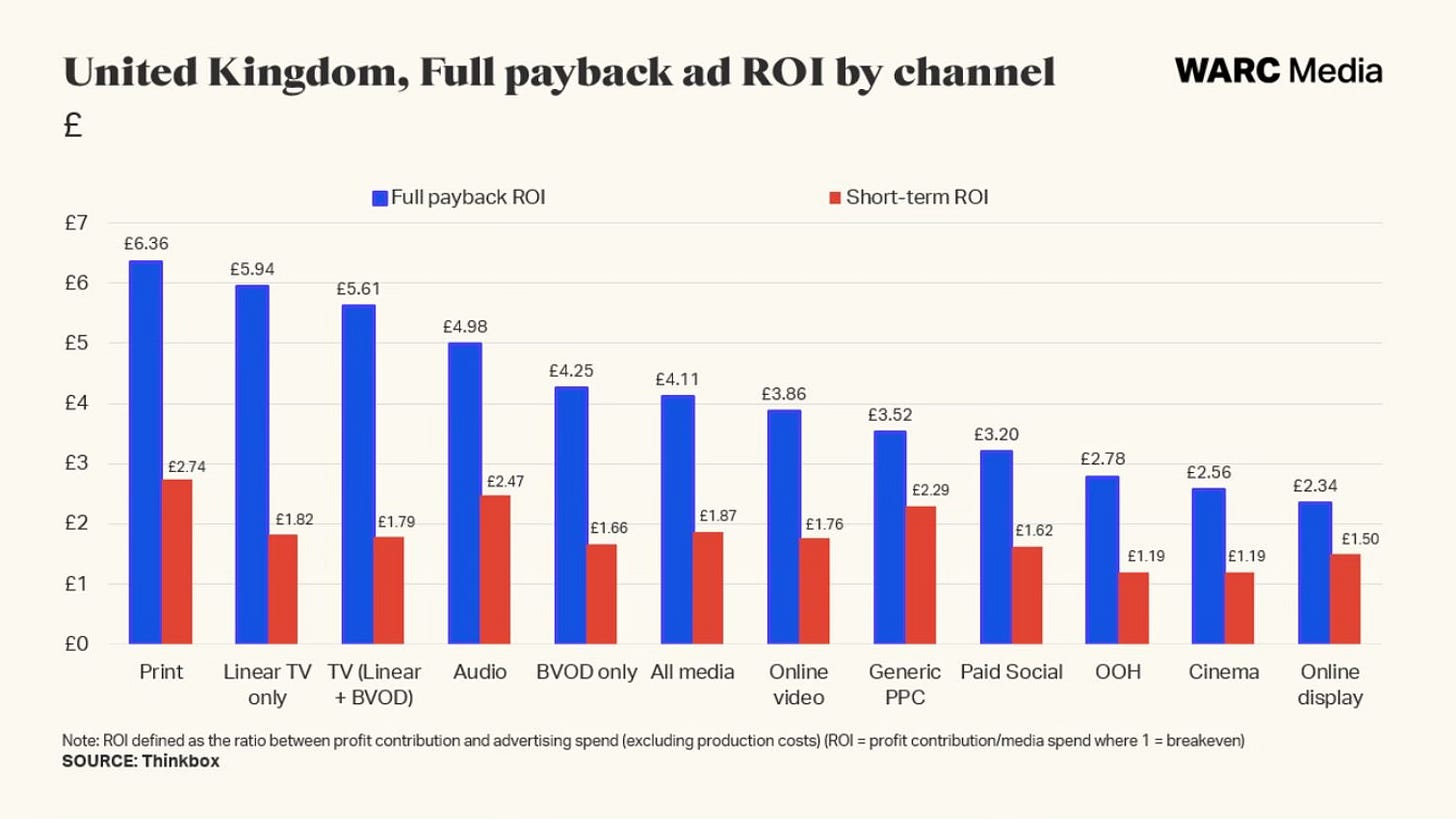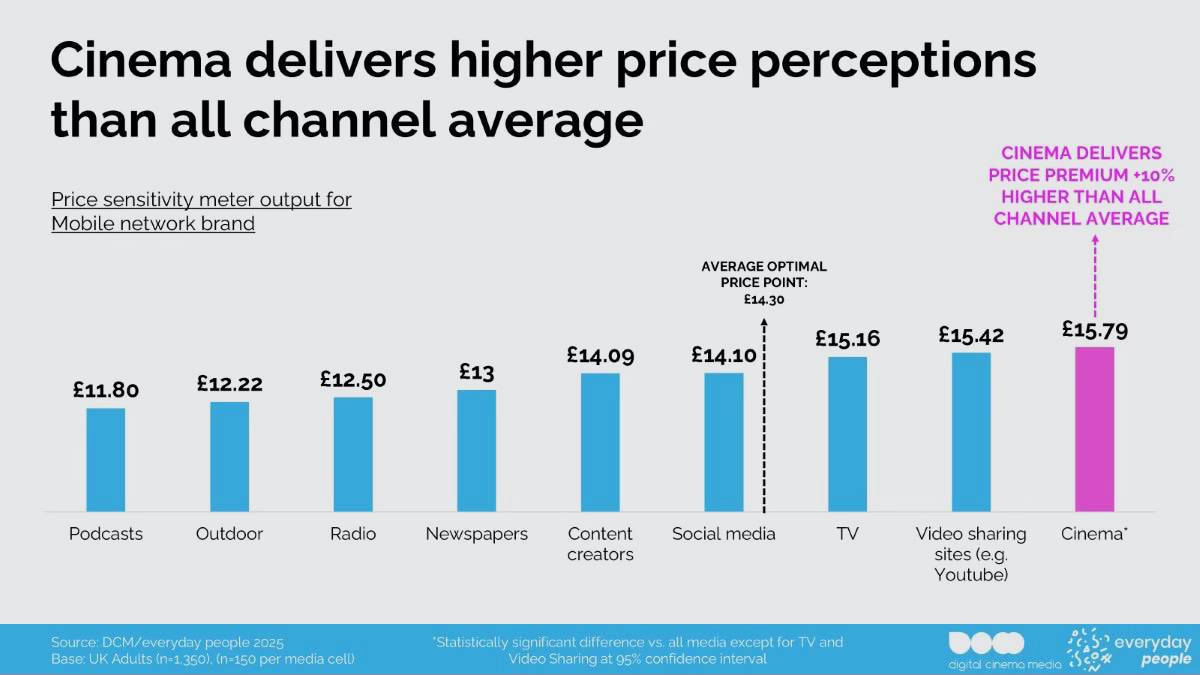Alex Murrell: Edition #010
Welcome
Welcome to Edition #010 of Strategy Made Simple.
This newsletter captures the best of what I’ve written, recorded and read since the last issue came out.
Enjoy.
Articles
I’ve published a new article titled, ‘Marketing’s Misleading Metric’.
Here’s a quick TLDR:
This article argues that ‘return on investment’ (ROI) is a malevolent metric that sits at the heart of many marketing discussions and decisions. I believe that the many marketers who prioritise this metric seek to capture value, but unintentionally destroy it. And there is three reasons for this. To maximise ROI marketers must prioritise efficiency over effectiveness. They must reduce their media money. And they must focus on the few consumers who are already most likely to convert. The result is an approach to advertising which suppresses a campaign’s profit producing potential. I realise this may sound unbelievable. Paradoxical, perhaps. So let’s work through these points one at a time.
Thank you to everyone who has read, liked and commented on the article already.
Past articles
For the newcomers, here are a few of my popular pieces:
Thinking rationally about emotion: Emotional campaigns outperform rational campaigns on every brand and business metric. But why is this? This article aims to answer this seeming simple question. It argues that emotional, brand-building communications are more effective because they attract more attention, create stronger memories and are more likely to be shared. An abridged version of this article was shared by Epoch.
How to ride a recession: This article argues that whilst recessions are a threat to some businesses, they are an opportunity for others. It argues that brands can not only survive a downturn but thrive in one. It explores five principles that will help your brand be one that finds strength in the slowdown. The principles will help you increase your dominance during a downturn. They will help you be one of the 9% of companies who come out of the recession stronger than you went in.
What’s the big idea?: In brand communications, coveting the ‘big idea’ is commonplace. We look for them. Long for them. Laud them and lionise them. And yet, despite its ubiquitous use, the ‘big idea’ remains incredibly ill-defined. This article is an attempt to change that. It argues that ‘big ideas’ are ‘big’ because they spread in three directions. They go long, spreading across campaigns. They go wide, spreading across channels. And they go far, spreading across countries.
There are now a total of fifteen articles available, for free on my site.
Summaries
Since publishing the last edition of the newsletter I’ve summarised Stephen King’s book A Masterclass in Brand Planning.
In total, you can now find 30 book summaries on my website, each of them no more than a two minute read.
Keep an eye on my LinkedIn for the next summary.
Podcasts
In June 2025, I joined the Giraffe Social team for an episode of their ‘Social in 10’ podcast. The conversation was inspired by my article, The Age Of Average. You can listen to the episode on Apple Podcasts, Spotify, or wherever you listen to podcasts.
Links
Here’s five of the best things I’ve read over the last few months.
Compound creativity
A new report here from System1 called Compound Creativity explores the value of creative consistency. The study analysed more than 4,000 ads over a 5 year period, split brands into three groups (least consistent, somewhat consistent and most consistent) and calculated how each group performed on a number of metrics. The report is worth reading in full. But here’s one the key slides. The most consistent group of brands outperformed the least consistent brands on brand effects (including brand awareness differentiation, creating brand values, building salience and fame and changing attitudes). The report also covers how consistent brands outperform on business effects (including sales value gain, profit gain and market share gain). If you have an ad, or a brand platform, that’s working, keep using it.
Optimal mix changes as brands mature
In a recent presentation for Radiocentre, creative consultant Peter Field used IPA data to show how the optimal budget allocation between brand building (emotional, broad reach) and sales activation (rational, tight targeting) communications changes as a brand moves through its lifecycle. The top-line takeaway: new brands should focus on building their sales, mature ones should focus on building their brands.
As the business grows, the marketing strategy should grow with it
Dr. Grace Kite of Magic Numbers shared a chart that shows a very similar finding to Peter Field (see previous slide), but uses an entirely different dataset and methodology. An econometric study found that for start ups performance (or “sales activation” in Peter Field’s language) deliver 2.5x the ROI of a balanced media mix. As a brand matures from the start up phase to the scale up phase, the returns start to balance out. And when a brand becomes a ‘big business’ a balanced media mix begins to deliver a greater ROI. Again, new brands should focus on building their sales, mature ones should focus on building their brands.
Full payback ad ROI by channel
The last two charts beg the question, which communication channels are best for brand building, and which are best for sales activation? A new report from Thinkbox (in partnership with Ebiquity, EssenceMediacom, Gain Theory, Mindshare, and Wavemaker UK) analysed £1.8bn in UK media investment and identified the average short term ROI (up to 13 weeks) and full payback ROI (up to 24 months) by channel. The full report includes much more. Well worth a read.
Cinema delivers higher price perceptions than all channel average
On a similar themes to the last chart, an analysis of nine different media channels by Ian Murray and Andrew Tenzer from Everyday People Research found that cinema had the greatest positive impact on a brand’s price perceptions. Perhaps a broader and more important insight, however, is that all three channels which performed above average on this metric were film (TV, video sharing sites and cinema).
Archive
If you’d like to go back and read previous editions of this newsletter, the first nine can be found below:
Over and out
Thank you again for subscribing to this newsletter. If you enjoyed the edition, feel free to share it with anyone who may find it valuable. You can also follow me on LinkedIn to get more frequent updates.
As always, please do let me know if you have any feedback. I always love to hear from you.
Until next time,
Alex


